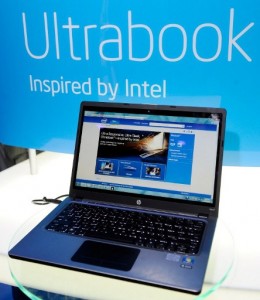MANILA, Philippines – The play of colors and erratic patterns found in contemporary Filipino art speaks of the Philippines’ vibrant identity and creative culture. The country’s abundant heritage continues to drive the thriving art scene and create notable talents that are making waves in both the local and international art market. With design taking a new form, what used to be limited to paper and canvas, Filipino art has also evolved into a reconstructed discipline of turning paint daubs to pixels. From the Malayan scripts to the American architectural patterns, the design world has progressed with the emerging technologies of today.
Movers and shakers of the Filipino design industry are now able to communicate brilliant ideas through modern media as a part of their daily creative cycle. However, turning bright ideas into a creative digital reality involves plenty of work. Even the most inventive designers take some time waiting for a vision to spark their artistic pursuits. Fortunately, thanks to modern technology, what comes after the meditative phase of the process already has a definite solution.
The Intel-inspired Ultrabook has revolutionized mobile computing by merging today’s most unique design and entertainment systems into one device. With the laptop’s mobility, safeguarding, and sharing features, illustrating colorful ideas is now just a click away.
To kickstart the creative flow, most designers pack their bags and travel. Whether it is in a local café or miles from home, a refreshing environment never fails to give one an artistic boost. “To say that I value mobility a lot would be an understatement as I often take my work with me everywhere. I get ideas and inspiration from the most random patterns – be it architecture, window displays or food. Bright ideas often come unanticipated, so designers should be able to note ideas down instantly with a portable device,” said up-and-coming illustrator Mai Evangelista.
Dan Matutina, a Manila-based designer and illustrator and lecturer at the University of the Philippines’ College of Fine Arts, expressed that creating contemporary digital art requires not only a mobile device but a tool that will last throughout the creative process. “Perfection takes time. Just one piece would take hours, if not days, to finish. I usually start with a pencil and paper. Once I have the concept down, I start working on the computer. I scan textures and paint spatters to achieve the signature look of my work, so there’s a good mix of handmade and digital elements in every piece I do. To be able to do all this, I need a visual device that is powerful enough to run multiple applications and programs, and will not shut down on me when I’m at my most creative state,” said Matutina.
Weighing in at less than 1 kilogram, the Ultrabook has built-in visual technology that makes the media experience more seamless and vivid. The Ultrabook also offers up to 9 hours of battery life with standby times from 25 to 40 days, allowing users to translate hours of aesthetic musing to a stunning visual display anyone can enjoy.
Mai believes creative protection is also a key to success in the design industry. But with the Internet’s reach and the ability of users to access multiple data using various applications, it is almost impossible to protect files once they are posted online. “I used to protect my work through invisible watermarks, but with the ability of other users and various applications that can alter that, I am never sure if my work is secure. I have researched for alternatives and used protective features of the creative suites that I use. Of course, that is not a sure fire way to protect your work but it definitely helps,” said the 22-year-old budding visual artist.
The Intel Ultrabook’s Identity Protection Technology activates a higher level of security to safeguard creative property. This technology enables a link between personal accounts and the Ultrabook device, shielding masterwork from unauthorized access.
The Ultrabook also sports Anti-Theft Technology, a hardware-based protection unit to keep a designer’s mind at ease in the event of device loss or theft. This feature detects possible robbery through system patterns and keeps digital content under lock and key.
Furthermore, the real breakthrough is beyond creating the design itself –it is sharing the craft to a vast audience online. The social media era demands for a compact and lightweight tool that enables sharing and syncing data and applications. Intel’s cutting-edge innovation and technology allows hassle-free connectivity with its Smart Connect Technology. This Ultrabook feature allows users to effortlessly sync data even when it’s on stand-by, and enables them to update online portfolios, mail accounts, and more.
Great innovations have transformed the creative trade. While no one knows for certain how technology will change in the next years, the Ultrabook sets the bar incredibly high when it comes to computing power and functionality, and will remain an asset to design in a digital era.
